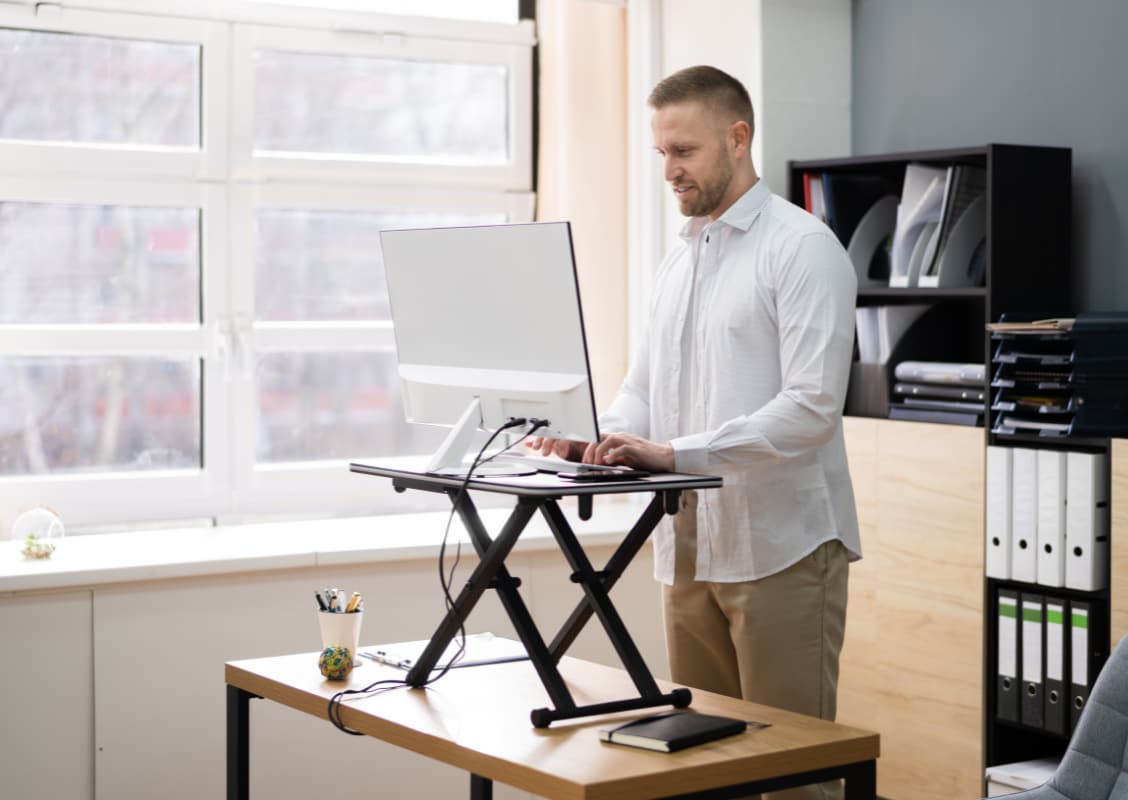In a world where the phrase "sitting is the new smoking" is increasingly becoming a mantra for a health-conscious populace, standing desks have confidently strutted into the limelight, asserting themselves as a healthier alternative to their traditional seated counterparts. They've become more than just a trendy office perk; they're now seen as a staple for those looking to improve their well-being. However, as with anything that promises to improve your life, the devil is in the details. How you actually make use of these innovative, height-adjustable desks can make a significant difference, not only in your immediate comfort but in your long-term health outcomes as well.
The Rise of the Standing Desk in the Modern Workspace: More Than Just a Trend
Standing desks are far from being a mere flash in the pan. Ever since they burst onto the scene, initially marketed as a revolutionary solution for weight loss and combating obesity, their popularity has skyrocketed to astronomical levels. From startup hubs to corporate offices, standing desks have become an almost ubiquitous sight. Yet, their rapid rise to prominence begs the question: are they truly as effective as the hype suggests? To unpack this, we need to dig deeper through the lens of scientific research to truly grasp the extent of their efficacy. It's not just about following the trend; it's about understanding the tangible benefits and limitations that come with this modern workspace innovation.
What Does Research Say?
General Effectiveness
Standing desks have been proven most effective in alleviating discomfort and pain across a range of demographics, from young professionals to those in the later stages of their careers. While you might not magically shed pounds overnight, the transition from a sitting to a standing position does significantly reduce physical strain on your back, neck, and shoulders. This ergonomically-friendly choice offers tangible relief, particularly for those who suffer from chronic discomfort associated with long hours of sitting.
Alertness and Mood
Contrary to the popular belief that standing desks automatically equate to heightened alertness, empirical studies have shown that they don't significantly impact your level of attentiveness. It's not a caffeine replacement, so to speak. Additionally, when it comes to the impact on workplace mood, findings remain inconclusive. While some users anecdotally report feeling happier, the data does not yet conclusively support the idea that standing desks are a cure-all for workplace blues.

Productivity
Interestingly, there have been no negative impacts noted on work performance due to the use of standing desks. In fact, quite the opposite is true: many users report feeling more energised during their workday, which could indirectly improve productivity. The lack of discomfort and the subtle physical activity associated with standing seem to create a more conducive environment for focus and task completion, although this still varies from person to person.
Best Practices for Standing Desk Users
The Art of Position Alternation
The essence of using these desks isn't to commit solely to a standing position; rather, they're designed for a rhythmic dance between sitting and standing throughout your workday. While there's still ongoing debate within the ergonomics community about the optimal sit-to-stand ratio, the prevailing wisdom suggests a balanced approach. To make the most of your standing desk, it's generally recommended to alternate between sitting and standing roughly every 30 minutes. This frequent shift not only helps to alleviate muscle fatigue but also contributes to better posture and potentially reduces the risk of sedentary lifestyle-related illnesses.
Right Desk, Right Height
When it comes to optimising your height-adjustable desk, one size doesn't fit all; it should be customised to align perfectly with your body metrics. Specifically, the height of the desk should allow your elbows to rest comfortably at a 90-degree angle when typing or using a mouse. As for your screen positioning, the rule of thumb is to place it about 20-28 inches from your face. But it's not just about distance; the top of the screen should also be at eye level, allowing for a slight upward tilt. This configuration helps reduce the risk of neck strain and promotes a more ergonomic line of sight.
Recommended Accessories
Anti-Fatigue Mats
If you're standing for prolonged periods, consider using an anti-fatigue mat. These handy tools improve blood flow and reduce leg or lower back pain.
Ergonomic Mouse and Keyboard
For the perfect wrist position, both your keyboard and mouse should be on the same level. Adjustable stands and gel mouse pads offer extra comfort.
Arm Supports
Using arm supports can significantly minimise the risk of developing neck and shoulder problems.
Move It or Lose It
Taking short, active breaks can revitalise you, reducing discomfort in your upper limbs and back. Software reminders can keep you on track.
Additional Nuggets of Wisdom
No One-Size-Fits-All
The optimal ratio of sitting to standing time may vary from person to person, often recommended to be between 1:1 and 2:1.
Potential Benefits Await
Apart from health improvements, standing desks can uplift your mood and energy levels. Users often report less stress and fatigue when using standing desks.
The Posture Paradigm
Maintaining proper posture, whether sitting or standing, is key to maximising the benefits of your height-adjustable desk.
Synopsis
Elevate your workday and well-being by mastering the art of standing desk usage. It's not just about standing more; it's about a balanced, ergonomic approach to alleviate discomfort.